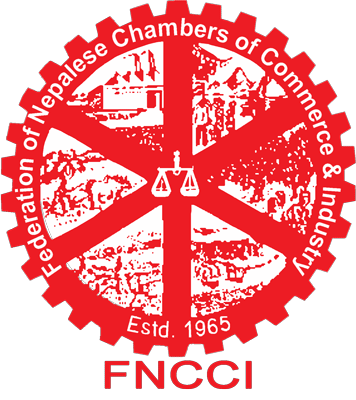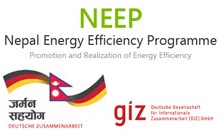According to a baseline study in 8 energy-intensive industrial sectors of Nepal energy cost of product value in limestone-based cement industries is with 48 % highest, followed by cold storage (38 %), Fixed Chimney brick kilns (31 %) and pulp and paper sector (20 %). In clinker-based industries energy cost amounts to at least 5 % of product value. Energy saving potential on the product cost is estimated to be highest for the Limestone based industry (above 19%).
In clinker based cement industries are estimated to be electricity up to 45,854 MWh could be saved. In limestone based cement industries of Nepal saving potentials amount to 35,390 MWh electrical and 1,598,359 GJ thermal energy (see Table). By implementing energy efficiency monetary savings in clinker-based factories and limestone-based factories amounts to about 38 Crore and 110 Crore Lakh Nepalese Rupee, respectively.
Experience from the past have identified many energy saving options for the cement sector that are highly profitable with payback periods of investment of less than 2 years. The following table shows some implemented examples option in Nepalese cement factories with the respected payback.
Energy Saving Tips
In following areas energy saving opportunties can be achieved:
1. Increase operating capacity of primary & secondary crusher.
2. Reduce idle run of crushers and belts.
3. Reduce idle operation of dust collection equipment.
1. Avoid idle running of raw mill conveyor system (Auxiliaries)
2. Avoid idle operation of raw mill lubrication system
3. Optimize starting & stopping sequence of raw mill (to minimise idle running of fans)
4. Minimise false air entry in raw mill system
5. Use vertical roller mill instead of ball mill
6. Control raw meal feed size by installation of tertiary crusher
7. Install belt and bucket elevator in place of pneumatic conveying
8. Installation of efficient mill intervals – diaphragm and liners
9. Install online X-Ray analyser for raw meal
10.Install slip power recovery system / VFD for raw mill fan / ESP fan
1.Install CO and O2 analyser at kiln inlet and preheating outlet
2.Maintain proper kiln seal (inlet and outlet) to avoid false air infiltration
3.Reduce leakages in the pre-heater system
4.Utilise the cooler waste heat for fly ash / slag / coal
5.Install soft starters for clinker breaker
6.Install VFD for cooler fans and cooler ID fans
7.Optimize the cooler exhaust chimney height to reduce the exhaust fan power consumption
8.Install water spray in cooler to minimise fan power consumption
9.Install system for firing waste tyre, bark, rice husk, groundnut shell and urban waste in pre-calciner
10.Conversion from pneumatic conveying of kiln feed to mechanical mode
11.Conversion from single channel to multichannel burners
12.Replace planetary cooler with grate cooler
13.Replace conventional coolers (planetary / grate) with high efficiency coolers
1. Elimination of spontaneous combustion, by proper stacking
2. Avoid idle running of coal conveyor & crusher
3. Optimise starting & stopping sequence of coal mill to reduce idle operation of fans
4. Maintain higher residue for pre-calciner firing
5. Increase residue of coal mix, if possible
1. Water spraying on the clinker at cooler outlet (Temp above 90oC, consumes more grinding energy)
2. Reduce cement mil vents and recirculate to reduce cement loss
3. Avoid idle running clinker conveyor – dust collector fan
4. Avoid idle running of cement silo exhaust fans
5. Optimise starting & stopping sequence of cement mill to avoid idle running
6. Increase production of blended cement (PPC and PSC)
7. Use of grinding aids
8. Optimise water spray compressor capacity
9. Optimise cement grinding fineness – Install particle size analyser and optimise the particle size distribution
10. Install belt conveyor / screw conveyor / bucket elevator system instead of pneumatic conveying
11. Installation of roller press / impact crusher / VRM as a pre-grinder before the ball mill
1. Eliminate compressor air leakages by a vigorous maintenance programme
2. Maintain compressed air filters in good condition
3. Install compressed air traps for receivers
4. Optimise compressor discharge pressure
5. Install screw compressors with VFD in place of old compressors
6. Replace multiple small units with single larger units
7. Install intermediate control system for compressed air systems
1. Avoid unnecessary lighting during day time
2. Use energy efficient lighting
3. Distribute load on transformer network in an optimum manner
4. Improve power factor
5. Individual compensation
6. Group compensation
7. Centralised compensation
8. Replace over sized motors
9. Replace with energy efficient motors
10. Use VFD for low / partial loads
11. Convert delta to star connection for motors loaded below 50% of full load (for occasional peak load provide automatic-star-delta-convertor)
12. Install energy saver in fluorescent lighting circuit
13. Fixing of light fixtures at optimum height
14. Operate lighting system at lower voltage (say 360 V in 3 phase)
15. Use servo stabiliser in lighting circuits
16. Replace conventional fluorescent tubes (40 W) with slim tubes (36 W)
17. Optimise system operating voltage level
18. Install demand controller for maximum utilisation of demand
19. Use of electronic ballast in place of conventional chokes
1. Increase loading on DG sets
2. Install VFD for cooling tower pumps and fans
3. Convert electrical heating furnace to thermal heating
4. Install WHR system in DG set for preheating furnace oil
5. Install low pressure drop cyclones for pre-heater
6. Install latest high-level control systems for kiln, raw mill and cement mills
7. Install WHR systems to recover heat from pre-heater and cooler exhaust



